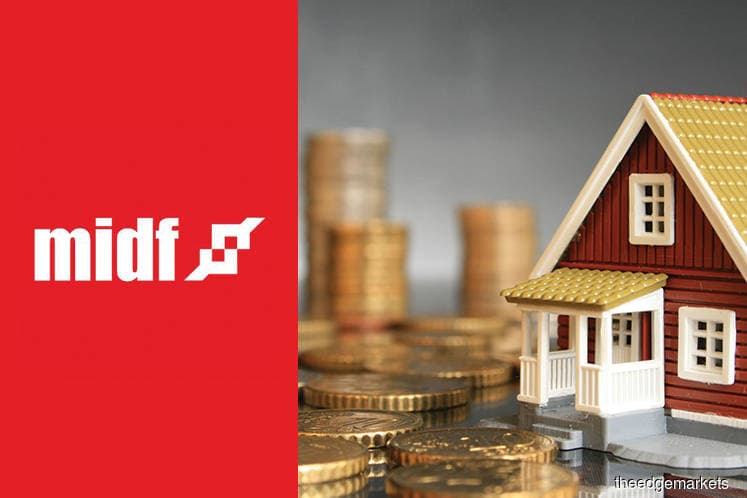
This article first appeared in The Edge Malaysia Weekly on December 24, 2018 - December 30, 2018
MALAYSIAN Industrial Development Finance Bhd (MIDF) and Al Rajhi Banking & Investment Corp (M) Bhd (Al Rajhi Malaysia) have taken the next step in trying to merge their businesses.
After holding exploratory talks, the parties have now written in to Bank Negara Malaysia asking for permission to commence discussions for a potential merger, sources say.
“They’re waiting for Bank Negara’s approval. But since it’s a holiday period, it’s unlikely to come till next month,” a source familiar with the matter tells The Edge.
It is understood that MIDF had held preliminary talks directly with Al Rajhi Malaysia’s Saudi Arabian owner. Al Rajhi Malaysia is wholly owned by Al Rajhi Bank, the world’s largest Islamic lender by assets.
MIDF is wholly owned by Permodalan Nasional Bhd. It is no secret that the development financial institution (DFI) has ambitions to become an Islamic bank. Merging with an Islamic bank is one way of getting there.
MIDF already does some Islamic financing but there are limits to what it can do without a licence. For example, it cannot collect retail deposits — one of the cheaper sources of funding for regular banks.
“[Having an Islamic banking licence] would give MIDF the flexibility of conducting a wider range of businesses, including payments and internet banking,” a source says.
MIDF declined comment for this story. “We don’t comment on speculation,” a spokesperson said. Al Rajhi Bank had not responded to email queries at press time.
Bloomberg first reported on Dec 12 that MIDF was exploring a merger with Al Rajhi Malaysia in a bid to become a universal Islamic bank.
If merged, the two small financial institutions — they are not public-listed entities — would have combined assets of about RM14.09 billion. As a matter of comparison, Bank Islam Malaysia Bhd, the largest standalone Islamic bank, has RM59.09 billion in assets.
Of the two, Al Rajhi Malaysia seems to be the bigger entity in terms of assets and profitability. Based on interim financial statements posted on its website, it made a net profit of RM18.49 million for the nine months to Sept 30, 2018 (9MFY2018), almost three times higher than RM6.43 million a year ago.
Revenue, at RM321.09 million, was slightly lower than RM338.02 million a year ago.
It had an asset size of RM7.79 billion and a gross financing book of RM5.14 billion. A large portion of its financing book comprises corporate and home financing.
MIDF, meanwhile, slipped to a net loss of RM21.49 million in 9MFY2018 compared with a net profit of RM40.52 million a year ago. It attributed the loss to higher credit loss allowance on loans, finance and advances as well as financial instruments of RM55.2 million
Its operating revenue, however, increased slightly to RM256.99 million from RM252.33 million previously. It had an asset size of RM6.3 billion.
MIDF was set up 58 years ago as the country’s maiden DFI and its role was to ensure access to financing for local manufacturing-based companies. It has since transformed into a more diversified group, with its key businesses being investment banking, development finance and asset management.
The bulk of its revenue and profit come from investment banking — via MIDF Investment Bank — and development finance.
In July, veteran investment banker Datuk Charon Wardini Mokhzani was appointed as its group managing director. Charon was previously head of CIMB Group Holdings Bhd’s investment banking operations.
Last Middle East bank standing?
Middle-East-owned banks have, for various reasons, bowed out from Malaysia in recent times.
Al Rajhi Malaysia, which set up operations in October 2016, and Kuwait Finance House Malaysia Bhd are currently the only two banks in Malaysia with Middle Eastern roots.
They were among the early banks here after Malaysia opened up its Islamic banking sector to foreign players.
Should Al Rajhi Malaysia proceed with a merger with MIDF, Kuwait Finance House Malaysia will be the last Middle Eastern bank standing.
Earlier this year, Asian Finance Bank Bhd (AFB) — owned by four Middle East shareholders — was acquired by Malaysia Building Society Bhd. MBSB, then a non-bank lender, acquired AFB for its Islamic banking licence.
Interestingly, MIDF had held exploratory merger talks with AFB some years ago, but nothing came of it.
The National Bank of Abu Dhabi Bhd, owned by the First Abu Dhabi Bank, also shut its operations in Malaysia this year.
In June, amid reports of these exits, Al Rajhi Malaysia CEO Steve Chen told The Edge that the bank was here to stay and that its transformation efforts that started over a year ago are already yielding results.
It has shown profits every year since FY2009. “Although our profitability is still modest compared with our peers, the momentum we have built into our business lines and the efficiency and productivity we are building into our operations have put us in good stead to deliver better and more significant results this year from annuity income,” he said.
Save by subscribing to us for your print and/or digital copy.
P/S: The Edge is also available on Apple's AppStore and Androids' Google Play.